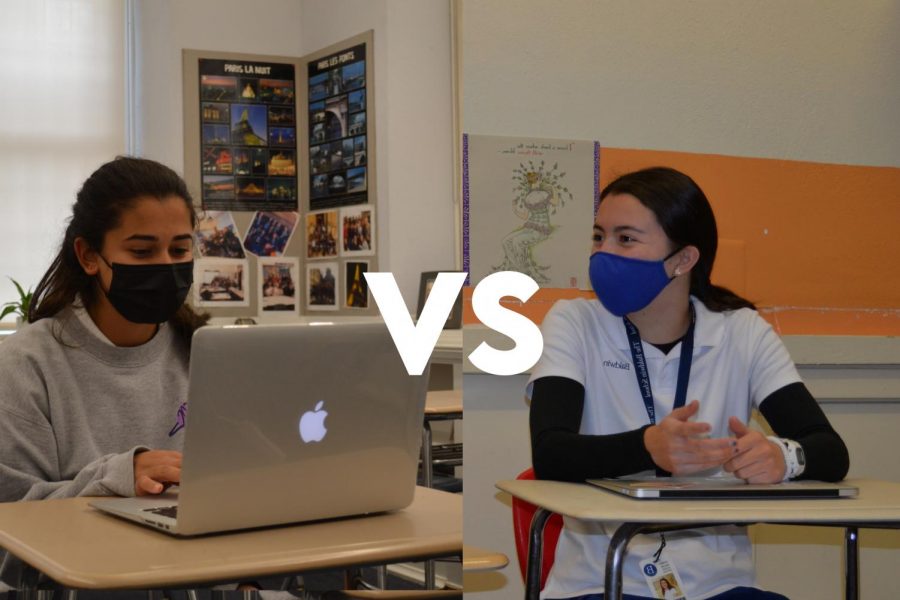Zoom vs In-Person Meetings?
Lauren and Eesha discuss which is the better meeting format.
As we begin to transition from Zoom to in-person meetings, we can reflect on the benefits and drawbacks of both formats. While Zoom posed a host of technological challenges, it also allowed people to be more flexible. During a time of social isolation, virtual meetings brought the world together.
Eesha and Lauren are back at it again to debate a new topic: Zoom or in-person meetings?
Lauren: Pro In-Person
While Zoom was a perfect tool during the height of the pandemic, the pros of in-person meetings outweigh those of Zoom. To choose Zoom over face-to-face meetings means choosing an inattentive audience, connection issues, and more.
Working or learning through Zoom threatens individual productivity and motivation. In person, everyone is seen as an individual; on Zoom, participants are minimized to squares on a screen and categorized together as one large grid of faces or names, rather than various independent workers.
A psychological tendency called the Ringelmann Effect helps explain why online meetings are typically unproductive. The Ringelmann Effect states that the bigger a group, the less inclined one will feel to contribute. In-person meetings lower the scale of the Ringelmann Effect because participants feel a greater sense of individuality.
Many users also tend to turn their cameras off, leading to an even more unequal meeting. Participants who turn their cameras off feel as if the rest of their colleagues should participate in the meeting, while they can sit back and relax.
On the other hand, an in-person setting allows teachers to look around and identify productive students and distracted students. There is more motivation to engage because people are not seen as little squares on a screen, but as real participants and contributors in the meeting.
Additionally, unsupervised screens on Zoom leave room for endless distraction, whether it’s scrolling through social media, completing unrelated work, or playing video games. While it is impossible to remove all distractions in actual classrooms or conference rooms, it is harder to get distracted in a more engaging, in-person learning environment.
Eesha: Pro Zoom
Although there are a few instances where in-person meetings may be more beneficial, the majority of meetings can and should be conducted over Zoom. Using Zoom over the pandemic has introduced a more convenient and comfortable way of sharing information with others.
Zoom provides a way for large groups of people from all over the world to meet conveniently anytime and anywhere. In-person meetings do not provide the same convenience for a high number of participants due to the logistics of travel and coordination. Meetings that take place online can include large numbers of people without the hassle of finding a venue or transportation.
Especially for international circumstances, Zoom is clearly the superior choice. Zoom meetings are also easier to plan because participants can just log onto a computer instead of traveling to an in-person location..
Participants all take up the same amount of space on a screen, meaning that they feel like they are on an equal playing field. This contrasts with a meeting room, where people who may be sitting towards the back would feel uncomfortable speaking up due to them not feeling as “involved” in the meeting or feeling like they do not belong. Zoom meetings help relieve the awkwardness of participants not being able to hear each other or feeling out of place in a space that may not fit everyone.
While the popularity of Zoom meetings decline as we return to post-pandemic society, some begin to wonder whether or not Zoom should be our “new normal” after all.
































